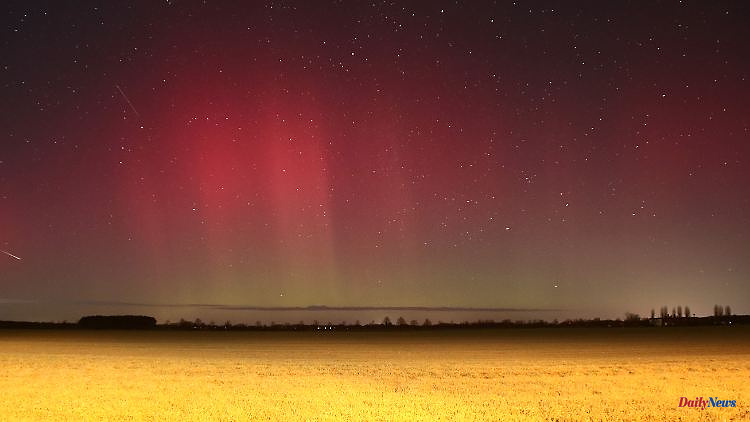As their name suggests, the Northern Lights are mainly seen at the North and South Poles. But last night, the fascinating luminous phenomena were admired in several regions of Germany, Great Britain and Ireland.
Night owls in Germany could hardly believe their eyes when the sky changed color from the northern lights last night. The reports of sightings of the northern lights came from Brandenburg, Lower Saxony, North Rhine-Westphalia, Hesse and Mecklenburg-Western Pomerania. The discoloration of the sky could also be admired over central Thuringia and on the Flensburg Fjord, reports the "Bild" newspaper, citing "Thüringer Allgemeine" and SHZ.de.
But not only in Germany, but also in regions of Great Britain and Ireland, the northern lights could be seen last night. This reports "The Guardian" and at the same time gives hope for another night with visible northern lights. To see the glow of the Northern Lights you have to be in really dark areas. In brightly lit cities with lots of light, on the other hand, you are often not very lucky.
The prospect of being able to admire the Northern Lights over Germany in the coming nights is not bad at all. "Up to and including Thursday, Hoch Hazal gives us a clear sky and thus more options for aurora sightings," says ntv weather expert Björn Alexander.
The natural spectacle, in which the sky can spectacularly turn green, red and purple tones, can usually be seen in countries that lie in or near the so-called auroral oval. The southern polar light oval extends almost exclusively over Antarctica, the northern one over Scandinavia, Greenland, northern Canada and Siberia. Auroras occur almost every night in these two areas.
In the adjacent regions there are certain times when sightings of the northern lights, scientifically known as the aurora borealis, are very likely. The months of September, October, February and March are given as the northern lights season at the North Pole. In addition, the northern lights are best seen on nights between 6 p.m. and 2 a.m., but only when the weather cooperates and the sky is clear. Some tour operators offer direct trips to the Northern Lights.
Aurorae originate high in the atmosphere. The colored glow is created when electrically charged particles of the solar wind hit the upper layers of the earth's atmosphere. In this way, the air molecules are stimulated to glow. The electrically charged particles generate electromagnetic fields that are harmless to humans, but can have negative effects on electronic systems.












